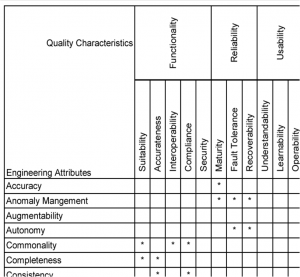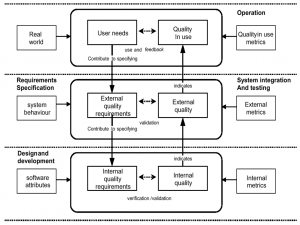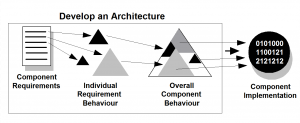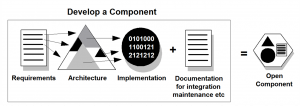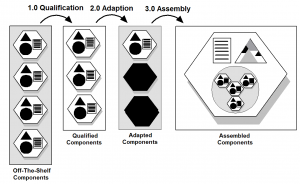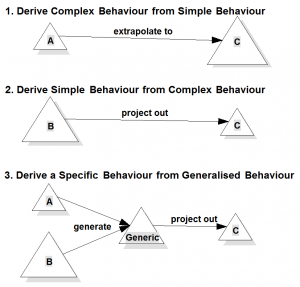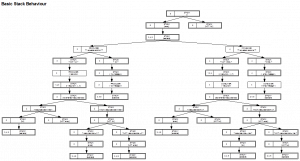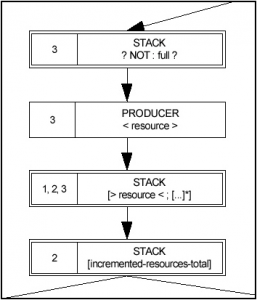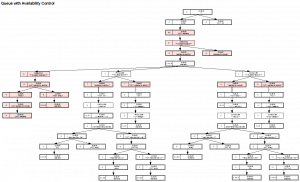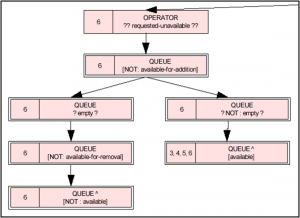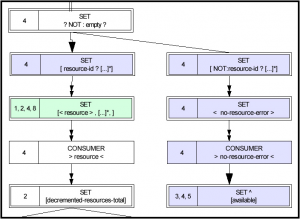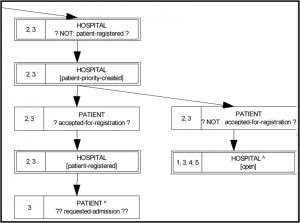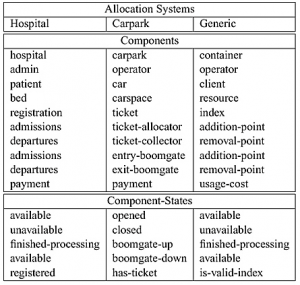Building Systems out of Available Components: Quality and Adaptation Considerations
Building Systems out of Available Components: Quality and Adaptation Considerations
Seminar
Author: Tony Gillan (B.InfTech)
Date: September 2002
Subject: 6190CIT : Honours Research Project
School: School of Computing and Information Technology
University: Griffith University
Campus: Nathan, Queensland, 4111, Australia
Contact: [email protected]
Final Dissertation: Download here
S2. Problem
Given a statement of quality requirements for a system, how can these be allocated and defined for the identified components?
- definition and specification of quality attributes
- component and integrated system quality
- adaptation of existing software components
S3. Approach
1.0 High-to-Low Approach:
- quality attribute definition/quantification
- distill/trace quality requirements down through to the implementation
2.0 Low-to-High Approach:
- identify applicable attributes of/within the architecture and trace-up to quality requirements
S4. Solution
- Quality Attribute Specification
- Determine standard representation (SQuaRE)
- Trace/embed representation within architecture
- Attach architecture to component product
- Quality Attribute Determination
- Identify attributes within architecture (Behavior Trees)
- Determine effects of component integration on quality attributes
- Determine overall system quality (iteration)
S5. Quality Attributes
- Functional Requirements
- define behaviour of individual functionality of the system
- Non-functional Requirements
- Define overall behaviour of the system
S6. Quality Attribute Research
- Gilb(1988)
- Deutsch & Willis(1988)
- ISO9126(1991)
- Abel & Rout (1993)
- Dromey (1996)
- Bass(1998)
- Wiegers(1999)
- SQuaRE(2002)
S7. Product Quality Standards
- ISO9126 (1991) & ISO14596 (1995)
- Product quality & evaluation
- good high level description of attributes.
- implies quality at implementation level.
- ISO25000 (in progress) SQuaRE
- Software Quality Requirements & Evaluation
- no user/developer can know all quality attributes
- measures quality from changing viewpoints/levels in lifecycle
- suggests high/medium/low weighting scheme
S8. SQuaRE – Quality in the Lifecycle
S9. Product Certification
- Software Standards
- IEEE/ISO/OMG, UML/XML/MDA/CORBA
- Much done in software standardisation
- need to certify that people are following (OOSPICE)
- need to specify when and how to record:
- risks & mitigation strategies
- quality attribute levels/requirements
- Certification
- independent 3rd party
- assure that standards requirements are met
S10. Component Integration & Quality
- Software Component Re-use
- Commercial Off-The-Shelf (COTS)
- Internal Product Line
- Review Integration Lifecycle
- Augment components to allow for quality requirement specifications.
- Determine quality attributes of overall integrated systems.
S11. COTS System Integration Lifecycle
S12. COTS Component Qualification Phase
- current qualification process (SEI)
S13. Genetic Software Engineering
- Behavior Tree Architecture Model
- proceeds in a systematic way from initial set of functional requirements to an architectural design.
- provides clear representation of dynamic behaviour of component-based system.
- identifies and resolves problems with requirements as early as possible.
- independent of implementation issues.
S14. Component Architecture Development
- Behaviour Tree Integration Process
S15. Component Augmentation
- Embedding the Behaviour Tree Architecture
S16. Updated COTS Lifecycle
- Traceability of all requirements
S17. Component Adaptation Phase
- Comparing/Modifying Behaviour Trees
S18. Comparing Behaviour
S19. Case Studies
- Stack, Queue, Set (linear & unordered collections)
- Concurrent Stack with Operator control
- Hospital Bed allocation system
- Car Space allocation system
- Safety, reliability, availability, security, adaptability, portability, testability
- Performance concurrency & resource efficiency
S20-S25.
S26. Equivalency Results
S27. Quality Attributes in Behaviour Trees
- Safety & Reliability
- Mine-Pump, Cruise Control (Dromey)
- Industrial Press (Xuelin)
- Security (Taylor)
- Changeability (Wen)
- Usability
- Calytrix
S28. Conclusions (1)
- Quality attributes are difficult to apply
- require a complete and consistent set of functional and non-functional requirements.
- relate to behaviour of overall component, not just particular functionality.
- different, historical categorisation of attributes.
- SQuaRE uses changing quality viewpoints (in-use, external, and internal)
- cannot build quality into black-box components, but can build quality into system that integrates them.
S29. Conclusions (2)
- Architecture is the best place to determine quality attributes.
- most attributes visible at architecture level
- can transform/adapt architecture after implementing functional requirements
- time/cost benefits
- avoids implementation issues
- assists certification and validation of components
- Behavior Tree model used as an Architecture Description.
- clear methodology for representing and validating functional requirements
- can be pruned, projected, integrated, and augmented, and transformed
- quality attributes analysis requires a clear representation of dynamic behaviour of overall system.
S31. Summary of Contributions
- Identified quality attributes within Behavior Tree architectures.
- Explored methods of integration and adaptation of existing architectures using Behavior Trees.
- Developed an XML Schema specification of Behavior Trees, and Requirements Specifications.
- Defined a process for specifying and tracing quality attributes from a set of requirements through to an architecture.
S32. Future Research
- Implement the component augmentations & interactions using JavaBeans, DCOM, etc.
- Integrate component integration results with other research using Behavior Tree model.
- Adapt quality attribute work with evolving MDA, OOSpice, SQuaRE etc.

